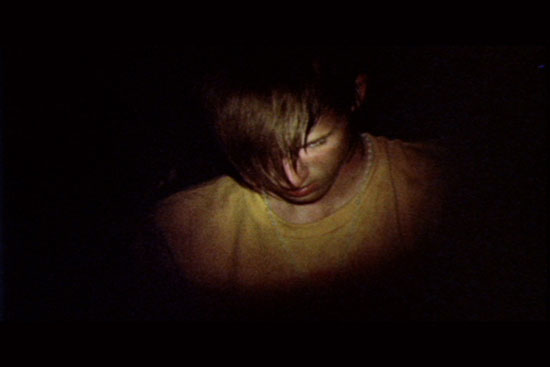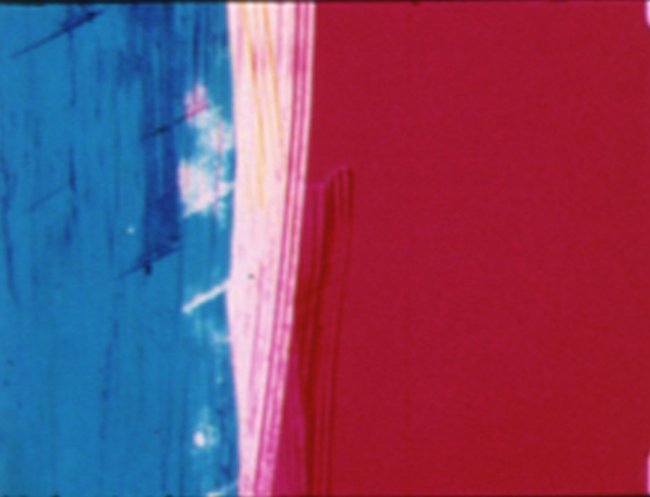April 7th, 2014
@ UT Union Theater (map)
8pm
Free!
Mad Stork explores the spectrum of “slow motions” in the cinematic format from the metered color experimentation of Bill Brand’s film series, Angular Momentum; to Ben Russell’s slow-motion capture of a raptured concert audience in Trypps #3; to Yoko Ono’s hour-long expansion a smile, Film No. 5, captured with a scientific laboratory camera.
Angular Momentum by Bill Brand
20m / 16mm / sound / 1973
Here, by contrast, the film is richly sensuous. Again nearly continuous color changes rotate around a spectrum, but this time at varying speeds of rotation and degrees of intensity. The colors on the left start nearly white and rotate very slowly. As the film progresses the color value become darker and the speed of rotation increases until, by the end, the color is nearly black and rotates around the spectrum about once per second. On the right, the opposite occurs. It starts black and progresses nearly to white. The varying rates of rotation determine the moment combination of colors.
The film has an improvised electronic soundtrack by Richard Teitelbaum.
Black and White Trypps Number Three by Ben Russell
12 min / 16mm / sound / 2007
…a filmic portrait of secular rapture that harks back to the great annunciation canvases of Titian and Caravaggio.” – Michael Sicinski, Green Cine Daily
The third part in a series of films dealing with naturally-derived psychedelia. Shot during a performance by Rhode Island noise band Lightning Bolt, this film documents the transformation of a rock audience’s collective freak-out into a trance ritual of the highest spiritual order.
Film No. 5 (Smile) by Yoko Ono
51 min / digital / sound / 1968
Instruction: bring your own instrument.
In August 1968, Yoko Ono directed two films, shot in the same afternoon in the garden of John Lennon’s house ‘Kenwood’ in Weybridge. The first film was called Number 5, but it has also been known as SMILE.
A special high-speed camera was used to film John’s facial expressions as he stuck out his tongue, wiggled his eyebrows and gave fleeting smiles over 3 minutes. The camera was able to take 20,000 frames per minute, which enabled the film to last 52 minutes. Yoko initially considered making Number 5 four hours long, but this was considered impractical and the finished movie ran for 52 minutes. It premiered at the Chicago Film Festival in 1968.
Starring John Lennon
Camera: William Wareing
Sound: John Lennon
Light: Garden
Music by John Lennon

